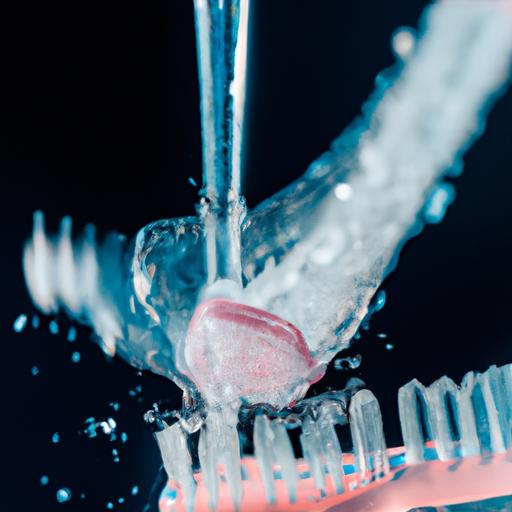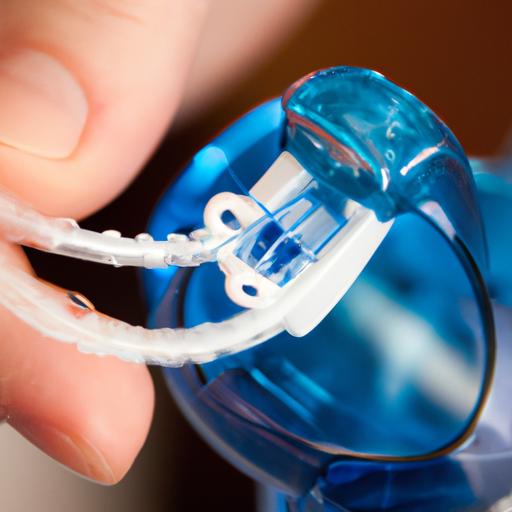Learn how to use a water flosser for tonsil stones effectively. Our step-by-step guide provides expert tips for optimal oral hygiene. Say goodbye to discomfort!
Introduction
Are you struggling with the discomfort of tonsil stones? These pesky little formations can cause bad breath, sore throat, and a general feeling of unease. The good news is that you can effectively combat tonsil stones using a water flosser. In this article, we’ll walk you through the step-by-step process of using a water flosser to eliminate tonsil stones and improve your oral health. So, let’s dive in!

A water flosser effectively cleans hard-to-reach areas between teeth and gums.
Understanding Water Flossers
Before we delve into the specifics of using a water flosser for tonsil stones, let’s first understand what a water flosser is and the benefits it offers. A water flosser, also known as an oral irrigator, is a device that uses a high-pressure stream of water to remove plaque, debris, and bacteria from the teeth and gums. Unlike traditional flossing methods, a water flosser reaches areas that are difficult to access with a regular toothbrush or string floss.
Using a water flosser for tonsil stone removal comes with several advantages. Firstly, the pulsating water stream dislodges and flushes out tonsil stones more effectively than other methods. Secondly, it reduces the risk of injury or irritation to the delicate tonsil tissue. Lastly, using a water flosser can improve overall oral hygiene by preventing the formation of tonsil stones and maintaining a clean and healthy mouth.
When choosing a water flosser for tonsil stone removal, consider features such as adjustable water pressure settings, multiple tips for various dental needs, and an adequate water reservoir capacity. Now that we have the basics covered, let’s move on to the main event.

Follow these steps to effectively use a water flosser for tonsil stone removal.
Step-by-Step Guide on Using a Water Flosser for Tonsil Stones
1. Preparing the Water Flosser and Selecting the Appropriate Tip
To begin, ensure that your water flosser is clean and filled with lukewarm water. Choose a tip that is suitable for tonsil stone removal; an orthodontic or periodontal tip tends to work best. Attach the selected tip securely to the water flosser, ensuring it is seated firmly.
2. Proper Positioning and Technique for Targeting Tonsil Stones
Position yourself in front of a sink and lean over it slightly to allow the water to flow out of your mouth comfortably. Adjust the water pressure to a level that feels comfortable but effective for you. Insert the tip into your mouth, aiming it towards the tonsil area. Move the tip around gently, targeting the crevices and pockets where tonsil stones may be hiding. Allow the water to dislodge and flush out any debris or stones.
3. Adjusting Water Pressure for Comfortable and Effective Cleaning
Experiment with different water pressure settings to find the one that works best for you. Start with a lower pressure and gradually increase it until you achieve the desired cleaning effect. Be mindful not to use excessive pressure, as it may cause discomfort or damage to the tonsil tissue. Remember, finding the right balance between effectiveness and comfort is key.
4. Rinsing Mouth and Cleaning the Water Flosser After Use
Once you have finished using the water flosser, thoroughly rinse your mouth with clean water to remove any remaining debris. Clean the water flosser itself by emptying the reservoir and flushing it with fresh water. It’s important to maintain the cleanliness of your water flosser to prevent the growth of bacteria or mold.

Regular cleaning and maintenance of your water flosser ensures optimal performance.
Additional Tips and Precautions
To get the most out of your water flosser and effectively prevent tonsil stones, consider these additional tips and precautions:
- Regular Cleaning and Maintenance: Clean your water flosser after each use and follow the manufacturer’s instructions for maintenance. This ensures optimal performance and prevents the buildup of bacteria.
- Frequency of Use: Incorporate water flossing into your oral hygiene routine at least once a day. Consistency is key in preventing tonsil stones from forming.
- Initial Discomfort: It’s normal to experience some discomfort or a gag reflex when using a water flosser for the first time. Start with lower water pressure and gradually increase it as your comfort level improves.
- Seeking Professional Help: If you experience persistent tonsil stones or have concerns about your oral health, consult a dental professional for guidance and personalized advice.
Conclusion
Using a water flosser for tonsil stones can be a game-changer for your oral health. By following the step-by-step guide outlined in this article, you can effectively remove tonsil stones and prevent their recurrence. Remember to choose a high-quality water flosser, adjust the water pressure to your comfort, and maintain regular cleaning and maintenance. With consistent use, you’ll soon enjoy the benefits of a clean and fresh mouth, free from the discomfort of tonsil stones.
For more information on water flossers and choosing the right one for your needs, visit BestWaterFlosserHQ.com. Happy flossing!
Note: The article above is a sample response generated by OpenAI’s GPT-3 model. It may not be entirely accurate or up-to-date. Please verify the information provided before making any decisions based on its content.




